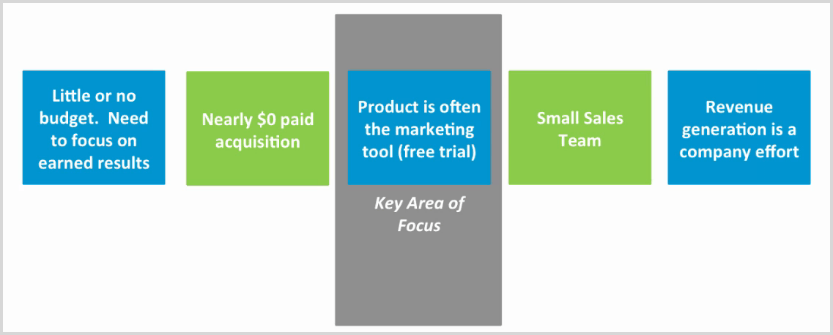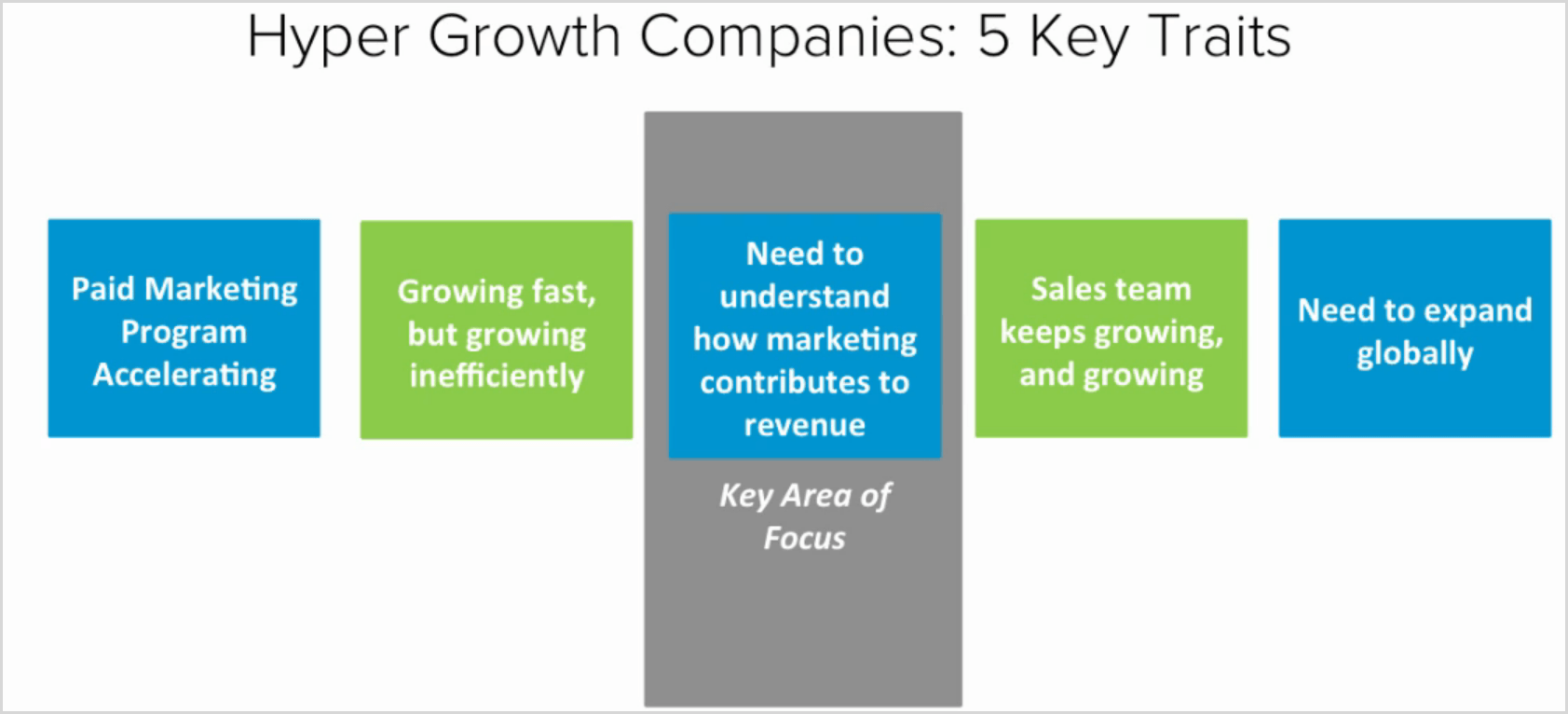During a recent Demand Metric Virtual Summit, Chief Analyst Jerry Rackley interviewed our own Kevin Bobowski, VP of Demand Generation at Act-On Software, on the topic of digital marketing playbooks. Just as you nurture prospects in different ways depending on where they are in the funnel, your own marketing playbook should change as your company goes through its evolving stages of growth.
This transcript has been edited for brevity; you can catch the whole 30-minute session of “Is Your Demand Generation Playbook Outdated?” on our website.
JERRY: What’s your definition of a “playbook”?

Chief Analyst
Demand Metric
KEVIN: I think of a playbook as being a set of goals, strategies and tactics that you can deploy for a particular situation. Suppose you enter a job as a demand generation person or head of marketing; what is the playbook that you would want to run to elevate and grow the marketing team and the business?
As we go through this presentation we’ll talk about the right set of skills that a demand generation professional should have, depending on the stage of a company’s growth and development.
A demand generation challenge
One interesting challenge for us as marketers is that we always have this desire to emulate more advanced, more successful companies, companies that are further along their growth stages. I think that’s a great thing. We all want to emulate market leaders, we want to be best in class.
But we often see marketers take some of those best practices from more advanced companies and apply them to early stage companies – and find themselves with a set of programs or playbooks that aren’t as successful.
Defining a company’s growth stages

VP, Demand Generation
Act-On Software
Let’s first outline the different stages of a company’s growth. For simplicity I’ve broken it down to three broad categories.
- Early stage companies: usually the primary goal there is seeking product/market fit. The company has a great technology they’ve built. They don’t yet have validity in the marketplace that they solve a specific problem. So they’re going out spending a lot of time in front of customers and prospects, demoing their product, telling their story, and seeing if they solve a problem that exists in the marketplace.
- Stage two is what I call high growth companies. These are companies that have figured out product-market fit, they’ve seen their business start to scale, and they need to grow fast, they need to scale quickly. These are companies that require lots of resources, lots of coordination with sales.
- The third is what I call becoming the market leader. And this is where you’ve established your product-market fit, you’re growing like crazy, and now it’s the time for you to emerge as the de facto leader in your market. There are a certain set of demand generation goals and tactics and other marketing programs that can help you become that undisputed leader in the marketplace.
A closer look at the early stage company…
I’ve outlined five key traits of any early stage company.
- At this stage, they’re either self-funded or they’ve only raised their series A, so budget’s going to be a bit tight. And the budget and the money and the resources they do have are really going to be focused on product development. So as a marketer you need to focus on earned media. Programs that aren’t paid, but programs where you earn coverage and awareness. Press releases, press coverage, content marketing, SEO, that sort of thing.
- Number two, early stage companies may have a little bit of money for paid acquisition, but not much. And as a matter of fact it’s probably not healthy to spend a lot of money in an early stage company on paid acquisition, because you may end up acquiring the wrong customers who then eventually churn. And really, you don’t want to spend a lot of paid dollars and advertising dollars until you really have established your product market fit.
- Often marketers will look at using the product as a marketing tool. So we see the free trial offering, the 30-day free trial. A lot of early stage companies that we know today really evolved from that model. I think Slack is a wonderful example. You can think about Hootsuite several years ago. These are companies that really figured out how to use the product as a marketing device and offered free trials in lieu of paid advertising models.
- Another trait of an early stage company is a small sales team. If you have a sales team at all, the cofounder may actually be your lead sales person. They’re out there every day, the CEO calling, leading with prospects. That might be the extent of your sales team, with maybe one or two other folks.
- And revenue generation is a company effort. What I mean by that is: at this point, because it’s such a small team, there’s a small sales organization, there’s probably not a lot of paid acquisition budget. The revenue that’s generated is really a shared effort and it’s hard to discern whether it’s coming from marketing or sales because everybody is acting as one team and one unit.
… and the early stage marketer
A great term that we use today is the “full stack marketer.” This is somebody who gets the product, they understand the product, they might have a little bit of product marketing background, and they have a really good sense for the market, the customers’ needs, prospects’ needs. They can actually go out and do demos and play the sales role themselves. They probably have great content marketing and SEO skills, and they really understand digital design and the website.
Keep in mind that a lot of the marketing functions at this point are around all those earned media sources. So this early stage marketer is probably good at social media, they’re probably good at getting a content marketing practice off the ground, and they’re going to build a website up and out to expand that digital presence. That’s a classic example of a full stack marketer. So they’re essentially the whole marketing team doing a lot of tasks and responsibilities, and probably having a blast doing it.
A closer look at the hyper growth company…
Our next stage of growth is the hyper growth companies. These are the companies that have gotten their product market fit. They know they solve a very specific problem in that market and people will pay for that product to solve that problem. These companies may range around $5-$7 million in revenue. In a matter of a couple of years they could be $20, $30, $40, even $50 million businesses. And there are five traits around these hyper growth companies.
- Number one is, now that you’ve established product market fit, you’re starting to spend more on paid marketing programs. That’s accelerating, so you need to figure out how to accelerate that spend both efficiently and effectively.
- One of the other things that may be happening is that you’re growing really fast, but you’re growing inefficiently. Say you’re throwing a bunch of leads in the funnel, and many of those leads may not be followed up by sales. There are inefficiencies in your internal process, but it’s all part of growing and scaling very quickly.
- The key area of focus during this hyper growth phase – as the company evolves and becomes more mature – is that marketing budgets are going to be tied to what marketing can contribute in terms of revenue. If there’s a revenue target for the company (let’s just say $10 million), marketing will need to own a certain percentage of that number. And from that they’ll be able to back up to the budget that they need and then they can figure out where they deploy that budget to drive the leads, opportunities and deals they need to hit that bookings target.
- Another key trait of the hyper growth company is that every day there’s new sales people on the floor. So you’ll walk in, in the morning, with your cup of coffee and you’ll probably see three or four new sales people you hadn’t seen the week before. This is a great sign of a hyper growth company. The focus here is to continue to add sales people, keep growing that sales organization so they can close more and more deals. That puts pressure on us as marketers because we have to feed the funnel as that sales team grows.
- The last nuance of a hyper growth company is you’re probably going to find yourself growing internationally. You’ll probably enter the UK, which is a natural extension for lots of companies. But you’ll continue to expand globally. That presents new challenges and new opportunities for the marketer. We start to run into language barriers and translation issues. We talk about how to work more closely with a remote sales team. The notion of growing globally presents some unique challenges and opportunities.
… and the hyper growth marketer
This is the point at a company’s stage where the resources are going into sales and marketing. In the early stage company, our marketer was really strong on product marketing. The difference here is that the hyper growth marketer’s probably very strong on product, and also has a great ability to build relationships between sales and marketing, which are so linked and so tied together.
This person needs to be very fluent in talking to sales, and very fluent on how to operate within the marketing team as well. This person is probably very numbers-driven, they understand sales and maybe even had a sales background at some point, and really, really have an ability to build and lead teams. Because just as the sales team is growing and expanding, the marketing team is too. And so this person’s going to have – must have – the ability to grow and scale teams, recruit great talent, and really set up his or her team to be successful in the future.
Another key component of this person (this is a little bit of a bonus but I think it’s important) is deeper technical skills. And as you think about where marketing is headed, where marketing technology is playing more and more of an important role over time, this person must understand the different marketing technologies out there, understand how to use those technologies, and probably have some good experience in database mining, data modeling, those types of capabilities. This is the person that we would want to see lead a hyper growth marketing team.
JERRY: Marketing needs to not only carry its weight, but it needs to demonstrate its performance, and it needs to be able to show that it’s contributing. I think we all agree about that. Here’s my question for you, how does a playbook help with that?
KEVIN: As a marketer, when you’re in this stage of growth, you need to almost be the CFO of the marketing team. And you need to think about how does marketing transition from a cost center to a revenue center? Specifically, it’s sitting down with the CFO, the head of sales, understanding what your targets are in terms of the revenue. Then you back into a revenue marketing model that you can break down into the number of leads by region, and the marketing budget needed to support all that lead volume and growth. That really becomes the key playbook for these hyper growth companies.
A closer look at the market leader company…
JERRY: So let’s move on now and talk about the last persona, the market leader.
KEVIN: This is the most interesting phase and there are a lot of companies that get to this point. You’ve gone through the early stage, you’ve successfully scaled the organization. And now what you want to do is position your company as the de facto market leader. So here are a couple of key traits that you start to see as you move out of a hyper growth phase and start to move into this market leader phase.
- Number one is, a lot of the inbound marketing programs, paid acquisition, those types of programs, are starting to see diminishing returns. You can’t scale them as quickly as you did maybe 12, 18, 24 months ago. As a result, you need new growth playbooks. And those new growth playbooks often involve what I call the outbound marketing team, often called the SDR (sales development reps). These folks don’t handle inbound leads; they’re really calling on top prospects in the market.
- In order to make their job easier when they’re doing strategic prospecting, you need to have a great brand. You want your team calling into prospects who say “Gosh I’ve heard of your company, I’m so glad you called, let’s schedule a demo.” So brand, brand awareness, brand development, really become critical as you move to become the market leader.
…and the market leader marketer
JERRY: Let’s talk about becoming a market leader marketer.
 KEVIN: There are a couple of key characteristics of a person in this role. Remember that in the early stage company, you’ve got people who really understand the interaction of product, product marketing and marketing. In the growth phase you’ve got people that really understand the intersection of sales and marketing.
KEVIN: There are a couple of key characteristics of a person in this role. Remember that in the early stage company, you’ve got people who really understand the interaction of product, product marketing and marketing. In the growth phase you’ve got people that really understand the intersection of sales and marketing.
Here you really need somebody who understands how to drive a true go-to-market strategy. And this really comes back to your comment about product launches (see side bar). Because the true go-to-market strategy includes not only sales and marketing, but sales, marketing and product. How do you take product, get it out in the market, how do you get customers and prospects excited about what you’re selling? And it’s really important – and often one of the most overlooked pieces of a product launch – to make sure that everybody in the company is excited about this. Because if you can get your sales team excited about this new product, they will be excited and selling it out to the market.
Everybody in the company participates. Even the people that might be on the phone as a recruiter in HR, I want them to know what that new product is, because if they’re excited they can build excitement with potential prospects and recruits, and get top talent in the door. So this is really across the entire company. The marketer at this stage really understands this alignment between sales, marketing and product, to deliver that big bang in the marketplace and really hone the airwaves.
JERRY: Let me ask you a more philosophical question. Do you think the same person can grow through all three of these stages you’ve identified? Can the marketer who starts with the startup, grow through the hyper growth stage, and still be the right marketing resource for the market leader stage.
KEVIN: Let’s compare this to the role of the CEO. So a founder or a cofounder who’s the CEO, they’re excited, they’re an entrepreneur, they’re fast paced. But over time, if the company grows and evolves, they find out that they’re probably better suited to be a chief product officer. I think the same thing happens a little bit in marketing, where you’ve got these full stack marketers who probably could take the step up to hyper growth company. But their passions and their interests are really at that early stage startup mode where they’re doing a lot of everything within marketing.
At the other end you might have a person who’s running marketing for a market leading company, and they may have had experience in one of those stages in the past. But they’re probably best suited for these companies that are starting to emerge as market leaders.
We see examples all the time of great cofounder CEOs who lead the company – but there’s also a lot of CEOs that say, “Listen, I’m a startup person at heart, I love product, I really want to focus on that.” And I think you see that same thing happening with marketers, where they can certainly take the step if they wanted to, but their interests and desires are often rooted in one of these three stages. And they tend to self-select back to one of those three stages.
JERRY: Interesting observation. I’ve seen some of the same things in my career, Kevin. Thanks to everyone for your attention.
Click the image below to catch the whole 30-minute session of “Is Your Demand Generation Playbook Outdated?”



